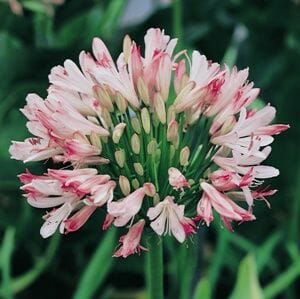Agapanthus Propagation: Tips for Expanding Your Plant Collection
Agapanthus Propagation: Tips for Expanding Your Plant Collection
Blog Article
Letting Loose the Secret to Effective Agapanthus Farming: Idea for a Flourishing Yard
In the realm of horticulture, cultivating agapanthus effectively requires a tactical approach that incorporates different elements of plant care. By recognizing the nuances of agapanthus growing, one can create an atmosphere where these plants grow and bloom generously.
Planting Agapanthus: Finest Practices
When growing Agapanthus, proper dirt prep work is vital for guaranteeing effective development and development of these lovely blossoms. Agapanthus, typically called Lily of the Nile or African lily, thrives in well-draining soil with a slightly acidic to neutral pH degree - Agapanthus. Before growing, it is crucial to change heavy clay soils with raw material such as garden compost or peat moss to enhance drain and provide crucial nutrients for the plants
To grow Agapanthus, choose a place that obtains full sunlight to partial color, as this will certainly promote healthy development and abundant flowering. Dig a hole twice the size of the plant's origin ball and place the Agapanthus at the exact same depth it was previously growing. Carefully backfill the hole with dirt, pressing down firmly to eliminate any kind of air pockets around the origins.
Water the newly planted Agapanthus completely and remain to keep the dirt evenly damp, specifically during the plant's energetic expanding period. Agapanthus. Using a balanced plant food once a month can better sustain the plant's development and blooming. By adhering to these ideal methods for growing Agapanthus, you can develop a spectacular screen of these exciting flowers in your garden
Suitable Dirt Issues for Agapanthus
For optimal development and growing success of Agapanthus plants, making certain the soil conditions are suitable is critical. Agapanthus flourishes in well-draining dirt with a somewhat acidic to neutral pH degree varying from 6.0 to 7.0. This sort of dirt enables ample water drainage, avoiding waterlogging which can lead to root rot. To enhance dirt water drainage, take into consideration including raw material such as garden compost or peat moss when preparing the growing site. In addition, Agapanthus chooses soil that is rich in nutrients, so including a well balanced plant food throughout the growing season can advertise healthy and balanced growth and vibrant blossoms.

Watering and Feeding Tips
To make sure healthy and balanced growth and vibrant blooms, correct watering and feeding methods are vital for successful Agapanthus farming. Agapanthus plants profit from routine watering, particularly during the growing period.
When it pertains to fertilizing Agapanthus, a well balanced fertilizer with equal parts nitrogen, phosphorus, and potassium can be used in the spring to promote healthy and balanced growth and blooming. Slow-release plant foods are optimal for providing nutrients slowly over an extended period. Stay clear of over-fertilizing, as this can lead to too much vegetation growth at the cost of blooms.
In addition, incorporating natural matter like compost into the dirt can enhance nutrient levels and enhance dirt structure, aiding in the total health and wellness of the Agapanthus plants. By following these watering and feeding ideas, garden enthusiasts can guarantee their Agapanthus plants thrive and create stunning screens of flowers.
Pruning and Deadheading Methods
Appropriate trimming and deadheading techniques play a crucial function in keeping the health and aesthetic appeals of Agapanthus plants, complementing the crucial methods of watering and feeding for effective cultivation. Trimming Agapanthus includes eliminating spent flower webpage heads, dead or yellowing fallen leaves, and overall shaping of the plant to advertise better development. Deadheading, the procedure of removing discolored blossoms, not only enhances the plant's look however additionally encourages further growing.
When deadheading Agapanthus, it is advisable to trim off the flower stem at the base utilizing sharp, tidy shears. This procedure reroutes the plant's power from seed manufacturing back right into origin and foliage growth, advertising a much healthier and a lot more durable plant. Normal deadheading can extend the flowering period of Agapanthus and stop self-seeding, which can bring read the full info here about congestion.
In terms of pruning, Agapanthus typically take advantage of a light trim after blossoming to clean up the plant and urge fresh development. Reducing the spent flower stems and eliminating any damaged or dead foliage helps preserve the plant's vigor and overall look. Nonetheless, it is vital to avoid reducing right into the crown of the plant, as this can compromise its health.

Protecting Agapanthus From Vermins and Diseases
Executing efficient bug and illness administration strategies is vital to protecting the health and wellness and vigor of Agapanthus plants in farming. One common bug visit site that affects Agapanthus is the Agapanthus borer, a caterpillar that tunnels right into the plant, creating damages to the leaves and flowers.
In enhancement to parasites, Agapanthus are at risk to conditions such as origin rot and fungal fallen leave areas. By staying alert and attending to bug and illness problems quickly, gardeners can aid their Agapanthus thrive and flourish.

Conclusion
Finally, successful farming of agapanthus requires appropriate growing techniques, excellent soil problems, ample watering and fertilizing, normal pruning and deadheading, and security from illness and pests. By adhering to these methods and tips, gardeners can make certain a flourishing garden full of gorgeous agapanthus flowers. Agapanthus. Remember to maintain consistent treatment and focus to detail to promote the health and longevity of these spectacular plants
When growing Agapanthus, correct dirt preparation is important for making sure effective development and development of these gorgeous blossoms.Water the freshly planted Agapanthus completely and continue to maintain the dirt equally wet, especially during the plant's energetic expanding period.For optimum development and blooming success of Agapanthus plants, ensuring the soil conditions are optimal is vital. When growing or transplanting Agapanthus, make sure the dirt is well-prepared to give the essential structure for the plants to develop themselves efficiently. One usual bug that influences Agapanthus is the Agapanthus borer, a caterpillar that passages right into the plant, creating damages to the leaves and flowers.
Report this page